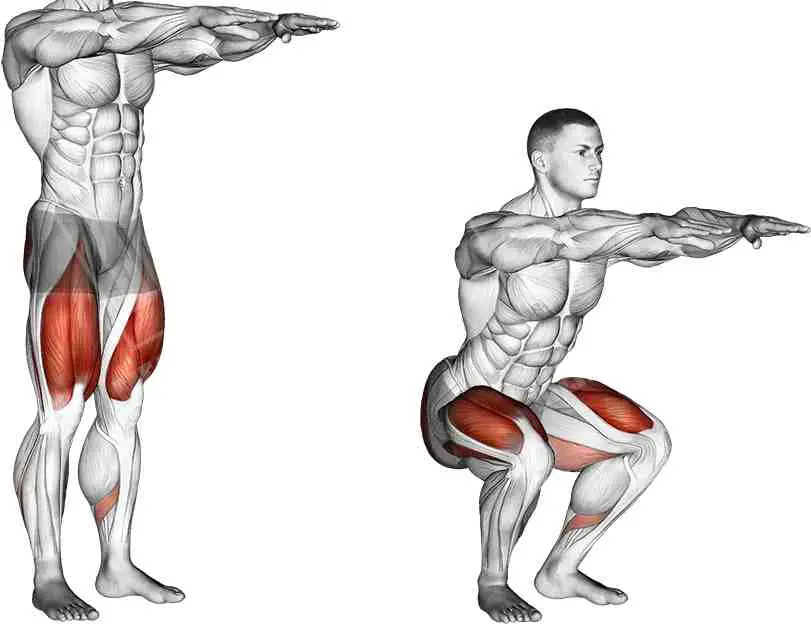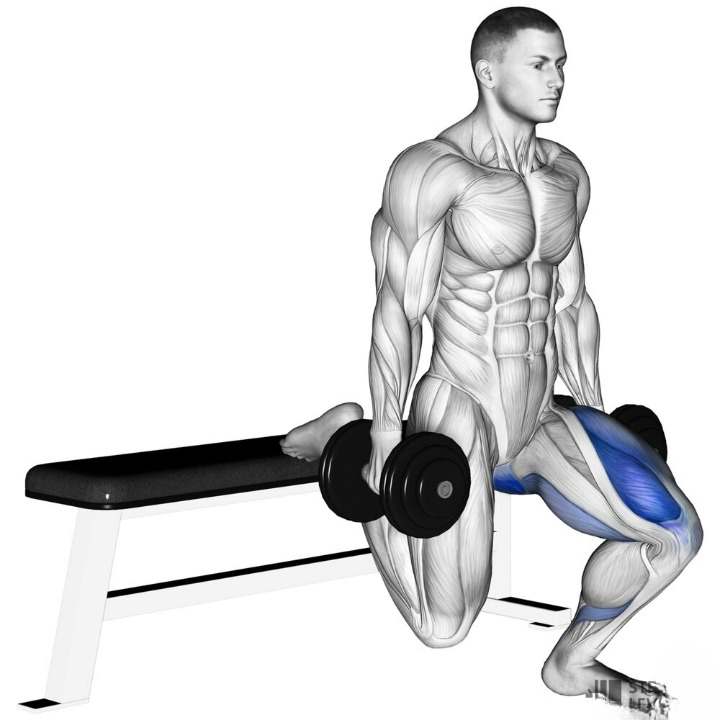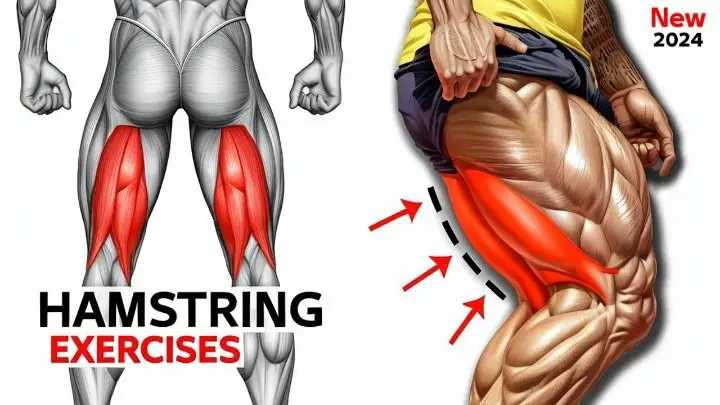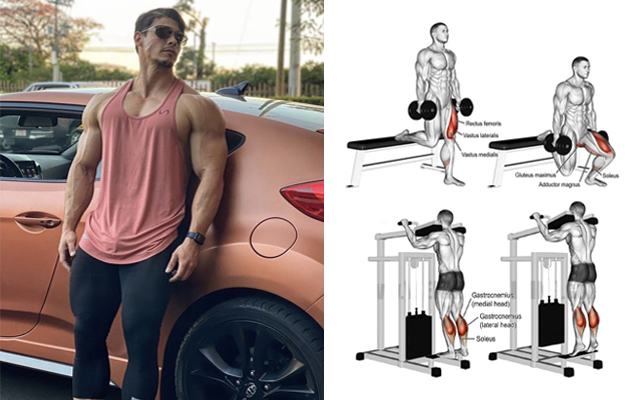In the world of fitness, squats reign supreme. They’re a staple in almost every workout routine, known for their ability to build strength and improve muscle tone. But did you know there’s more than one way to squat? In this article, we’re diving deep into the world of squats, comparing the well-known Traditional Squats with the lesser-known but equally effective Bulgarian Split Squats.
We’ll explore their origins, the muscles they target, their benefits, and how to perform them correctly. Whether you’re a fitness enthusiast looking to mix up your routine or a beginner trying to find the right exercise for you, this comprehensive guide will provide you with all the information you need. So, let’s get started and discover the power of squats!
Introduction to Traditional Squats and Bulgarian Split Squats
Traditional Squats and Bulgarian Split Squats are two powerful exercises that can transform your lower body strength and endurance. But what exactly are they?
Traditional Squats, often simply referred to as squats, are a compound exercise that primarily targets the quadriceps, but also works the glutes, hamstrings, and calves. They are performed by standing with your feet shoulder-width apart, then bending your knees and hips to lower your body as if sitting back into a chair, before pushing back up to the starting position.
SHOP FOR THE ADJUSTABLE DUMBBELL SET ON AMAZON
On the other hand, Bulgarian Split Squats are a variation of the traditional squat that involves placing one foot on an elevated surface behind you while you perform the squat motion with the other leg. This exercise places a greater emphasis on the quadriceps and glutes, and also requires more balance and stability than traditional squats.
Both exercises offer unique benefits and can be incorporated into your workout routine for a well-rounded lower-body strength training regimen.
Difference between Traditional Squats and Bulgarian Split Squats
Traditional Squats and Bulgarian Split Squats, while similar in name, have some key differences that make them unique. Here are some of the main differences between the two:
- Muscles Targeted: Traditional squats are a compound exercise that targets multiple muscles including the quadriceps, glutes, hamstrings, and calves. Bulgarian Split Squats, on the other hand, place a greater emphasis on the quadriceps and glutes, while also working the hamstrings and calves.
- Balance and Stability: Bulgarian Split Squats require more balance and stability due to the elevated rear foot position. This can engage the core muscles more than traditional squats.
- Equipment: Traditional squats can be performed with just your body weight or with a barbell across your back. Bulgarian Split Squats require an additional piece of equipment (like a bench or box) to elevate your rear foot.
- Intensity: Due to the unilateral nature of Bulgarian Split Squats, they can be more intense on the working leg compared to traditional squats.
- Flexibility: Bulgarian Split Squats require more flexibility in the hip flexors due to the rear foot being elevated.
Remember, both exercises have their own benefits and can be incorporated into your workout routine based on your fitness goals and level.
Benefits of Traditional Squats and Bulgarian Split Squats
Traditional Squats and Bulgarian Split Squats are both effective lower body exercises that target various muscle groups. Here are some benefits of each:
Traditional Squats
1. Muscle Engagement:
- Works the entire lower body, including quadriceps, hamstrings, glutes, and calves.
- Engages the core for stability.
2. Functional Movement:
- Mimics natural, functional movements like sitting and standing.
- Transfers well to activities in daily life and sports.
3. Joint Flexibility:
- Promotes flexibility in the hip, knee, and ankle joints.
- Enhances overall lower body mobility.
4. Hormonal Response:
Triggers the release of growth hormone and testosterone, contributing to muscle growth and fat loss.
5. Variety of Variations:
Allows for variations like front squats, back squats, and overhead squats, targeting muscles in slightly different ways.
Bulgarian Split Squats
1. Unilateral Focus:
- Emphasizes single-leg strength and stability, helping to correct muscle imbalances.
- Great for identifying and addressing strength discrepancies between the legs.
2. Glute Activation:
- Places a significant load on the glutes, aiding in glute development and activation.
- Can be especially beneficial for individuals with weak or underactive glute muscles.
3. Reduced Spinal Load:
- Puts less stress on the lower back compared to traditional squats.
- Suitable for individuals with lower back issues or those who need to minimize axial loading.
4. Improved Balance and Coordination:
- Challenges balance and coordination due to the single-leg stance.
- Enhances proprioception and stability.
5. Versatility:
- Can be performed with body weight, dumbbells, or a barbell.
- Easy to modify based on fitness levels and equipment availability.
SHOP FOR THE BARBELL WEIGHT ON AMAZON
Ultimately, incorporating a variety of exercises, including both traditional squats and Bulgarian split squats, into your routine can offer a well-rounded approach to lower body strength and development.
Safety Considerations
As with any exercise, there are some safety considerations to keep in mind when performing traditional squats and Bulgarian split squats. Here are some of them:
- Warm up properly before starting the exercises, and stretch your muscles after finishing them.
- Choose a weight that is appropriate for your fitness level and goals, and do not lift more than you can handle with good form.
- Keep your core engaged and your spine neutral throughout the movements.
- Breathe deeply and exhale as you push up from the bottom position.
- For traditional squats, keep your feet shoulder-width apart, your toes slightly turned out, and your chest up. Lower your hips until your thighs are parallel to the floor, or as low as you can comfortably go, while keeping your back straight and your knees in line with your toes. Push through your heels and squeeze your glutes to return to the starting position.
- For Bulgarian split squats, place yourself around two feet in front of a bench or a sturdy chair that is knee-level. Raise your rear leg and place the top of your foot on the bench or chair behind you. Lower your hips until your front thigh is parallel to the floor, or as low as you can comfortably go, while keeping your torso upright and your front knee behind your toes. Push through your front heel and squeeze your glutes to return to the starting position. Repeat the same movement with the other leg.
- Avoid bouncing, jerking, or leaning too far forward or backward during the exercises.
- Rest for at least one minute between sets, and for at least one day between workouts.
SHOP FOR THE WORKOUT SHOES AMAZON
These are some of the safety considerations for traditional squats and Bulgarian split squats. If you follow these tips, you can perform these exercises safely and effectively.
How to Perform Traditional Squats and Bulgarian Split Squats
Performing traditional squats and Bulgarian split squats correctly involves proper form and technique. Here are step-by-step instructions for each exercise:
Traditional Squats

1. Starting Position:
- Stand with your feet shoulder-width apart.
- Keep your toes pointing slightly outward.
- Engage your core and maintain a neutral spine.
2. Descent (Lowering Phase):
- Initiate the movement by pushing your hips back, as if sitting in a chair.
- Bend your knees and lower your body down, keeping your chest up.
- Lower yourself until your thighs are parallel to the ground or as low as your flexibility allows.
3. Ascent (Rising Phase):
- Push through your heels.
- Straighten your legs and extend your hips to return to the starting position.
- Keep your chest up throughout the movement.
4. Breathing:
- Inhale deeply before descending.
- Exhale as you push up.
5. Repetition:
Perform the desired number of repetitions, maintaining proper form.
Bulgarian Split Squats

1. Starting Position:
- Stand facing away from a bench or sturdy surface.
- Take a step forward with one foot and place the other foot behind you on the bench.
- Ensure your feet are hip-width apart.
2. Descent (Lowering Phase):
- Lower your body by bending the front knee.
- Aim to create a 90-degree angle with the front knee while keeping the back knee just above the ground.
3. Ascent (Rising Phase):
- Push through the heel of the front foot to return to the starting position.
- Keep your torso upright throughout the movement.
4. Balance and Stability:
- Focus on balance and stability, engaging your core.
- Use your arms for balance if needed.
5. Repetition:
Perform the desired number of repetitions on one leg before switching to the other.
6. Form Tips:
- Ensure the front knee tracks over the toes.
- Keep the weight evenly distributed between both legs.
- Maintain a neutral spine and avoid leaning too far forward.
SHOP FOR THE RESISTANCE BAND ON AMAZON
Remember, it’s crucial to start with a weight that allows you to maintain proper form. As you become more comfortable and stronger, you can gradually increase the resistance.
Variations of Traditional Squats
There are many variations of traditional squats that can target different muscles, increase the challenge, or add some variety to your workout. Here are some examples of squat variations:
Comparing Front and Back Squats
- Front squat: You hold the barbell across your shoulders in front of your body, which shifts the load to your quadriceps and upper back. This variation requires more core and upper back strength, and is harder to cheat than the back squat.
- Overhead squat: You hold the barbell overhead with your arms locked out, which engages your shoulders, arms, and core. This variation requires a lot of mobility, stability, and coordination, and is often used in Olympic lifting.
- Zercher squat: You hold the barbell in the crook of your elbows, which places more stress on your biceps, forearms, and anterior deltoids. This variation also forces you to keep your torso upright and your chest out, which can improve your posture and squat form.
- Anderson squat: You start the squat from the bottom position, with the barbell resting on pins or blocks. This eliminates the stretch reflex and makes you generate more force from a dead stop. This variation can help you overcome sticking points and increase your explosive power.
- Goblet squat: You hold a dumbbell or a kettlebell in front of your chest, which adds resistance and challenges your core. This variation is a good way to learn proper squat technique, as it helps you keep your chest up and your elbows in.
- Squat jump: You perform a basic squat, but at the bottom position, you explode up and jump as high as you can. This variation adds a plyometric element to your squat, which improves your speed, agility, and power.
SHOP FOR THE FOAM ROLLER ON AMAZON
These are some of the variations of traditional squats that you can try. You can also use different types of equipment, such as resistance bands, yoga balls, or TRX straps, to modify your squats.
Variations of Bulgarian Split Squats
Bulgarian split squats are a great exercise for strengthening your lower body muscles, improving your balance, and increasing your range of motion. Many variations of this exercise can make it more challenging, interesting, or suitable for your goals. Here are some of the variations that you can try:
Muscles Worked in Goblet Squats
- Weighted Bulgarian split squat: You can add resistance to your Bulgarian split squats by holding dumbbells, kettlebells, or a barbell on your shoulders. This will increase the load on your legs and make the exercise harder. You can also use a resistance band around your front foot and shoulders to create tension throughout the movement.
- Eccentric emphasis Bulgarian split squat: You can focus on the lowering phase of the Bulgarian split squat by slowing it down to 3-5 seconds. This will increase the time under tension and muscle damage, which can lead to more growth and strength. You can also pause at the bottom position for 1-2 seconds to eliminate the stretch reflex and make the exercise more challenging.
- Paused Bulgarian split squat: You can pause at the bottom position of the Bulgarian split squat for 1-2 seconds to increase the difficulty and the stability. This will also prevent you from bouncing or using momentum to get up, and force you to generate more force from a dead stop.
- Deficit Bulgarian split squat: You can increase the range of motion and the stretch on your back leg by placing your front foot on a small platform, such as a weight plate or a step. This will make the exercise more demanding and improve your flexibility and mobility.
- Heel elevated Bulgarian split squat: You can place your front heel on a small platform, such as a weight plate or a book, to shift the focus more to your quads. This will also reduce the pressure on your front knee and ankle, and make the exercise more comfortable for some people.
- Plyo Bulgarian split squat: You can add a plyometric element to your Bulgarian split squat by jumping up at the top position and switching your legs in mid-air. This will improve your speed, agility, and power, and also increase your heart rate and calorie burn. Make sure to land softly and with good form to avoid injury.
- 1 ½ reps Bulgarian split squat: You can increase the intensity and the burn on your legs by doing 1 ½ reps of the Bulgarian split squat. This means that you lower down to the bottom position, come up halfway, lower down again, and then come up all the way. This will keep your muscles under constant tension and fatigue them faster.
- Stability ball Bulgarian split squat: You can place your back foot on a stability ball instead of a bench to make the exercise more unstable and challenging. This will require more core and hip stability, and also allow you to adjust the distance between your feet more easily. You can also roll the ball forward or backward to change the angle and the emphasis on your legs.
- Suspension trainer Bulgarian split squat: You can use a suspension trainer, such as a TRX, to elevate your back foot and add instability to the exercise. This will also allow you to adjust the height and the distance of your back foot, and to use your arms for assistance if needed. You can also lean forward or backward to change the difficulty and the focus on your legs.
These are some of the variations of Bulgarian split squats that you can try. You can also mix and match different variations to create your own custom version of the exercise.
FAQs
Q 1. What equipment do I need for Traditional Squats and Bulgarian Split Squats?
Traditional Squats can be performed with just your body weight, or you can add a barbell or dumbbells for added resistance. For Bulgarian Split Squats, you’ll need an elevated surface like a bench or box for your rear foot, and optionally, dumbbells or a barbell for added resistance.
Q 2. How many sets and reps should I do for each exercise?
This can vary depending on your fitness level and goals. A common recommendation is to start with 3 sets of 10-15 reps for each exercise. As you get stronger, you can increase the number of sets or reps, or add weight to make the exercises more challenging.
Q 3. Can I do these exercises every day?
It’s generally recommended to give your muscles time to rest and recover between workouts. Therefore, you might want to perform these exercises every other day, or 2-3 times per week. Always listen to your body and adjust your workout routine as needed.
Q 4. What should I do if I feel pain while performing these exercises?
If you feel pain while performing these exercises, stop immediately. Pain could be a sign that you’re not performing the exercise correctly, or that you’re pushing yourself too hard. Always prioritize proper form over the number of reps or the amount of weight. If the pain persists, consult with a healthcare professional.
Q 5. Are there any modifications for beginners or those with injuries?
Yes, both exercises can be modified. For Traditional Squats, beginners can start by doing squats against a wall or using a stability ball. For Bulgarian Split Squats, beginners can start without the elevated rear foot, or use a lower surface. If you have an injury, always consult with a healthcare professional before attempting these exercises.
Q 6. How can I progress these exercises as I get stronger?
As you get stronger, you can increase the number of sets or reps, or add weight to make the exercises more challenging. You can also try variations of each exercise for a new challenge.
Q 7. Can these exercises help with weight loss?
Yes, both Traditional Squats and Bulgarian Split Squats can contribute to weight loss as part of a balanced diet and regular exercise routine. They can help build muscle, and muscle burns more calories at rest than fat does.
Q 8. What other exercises pair well with Traditional Squats and Bulgarian Split Squats?
These exercises pair well with other lower body exercises like lunges, deadlifts, and step-ups. They can also be combined with upper body and core exercises for a full-body workout.
Conclusion
In conclusion, both Traditional Squats and Bulgarian Split Squats are powerful exercises that can help you build strength, improve muscle tone, and enhance your overall fitness. While they target similar muscle groups, the differences in their execution make them unique in their own ways.
Traditional Squats are a versatile and accessible exercise that offers a full-body workout, while Bulgarian Split Squats provide a more targeted workout for the quadriceps and glutes, and can help improve balance and flexibility. Incorporating both exercises into your workout routine can provide a well-rounded lower body strength training regimen.

Good day, and welcome to Fitthour. My name is Shubham Vijay, and I am a certified personal trainer and nutrition coach with 6 years of experience in the fitness industry. At Fitthour, we specialize in types of training, such as strength training, cardio, or HIIT, and our mission is to help clients achieve their fitness goals and improve their overall health.



